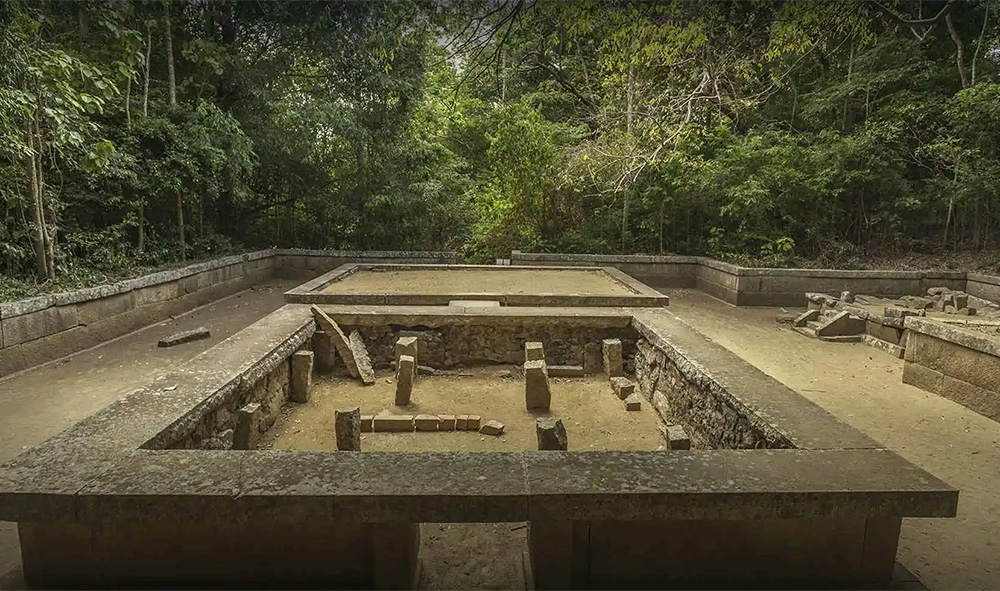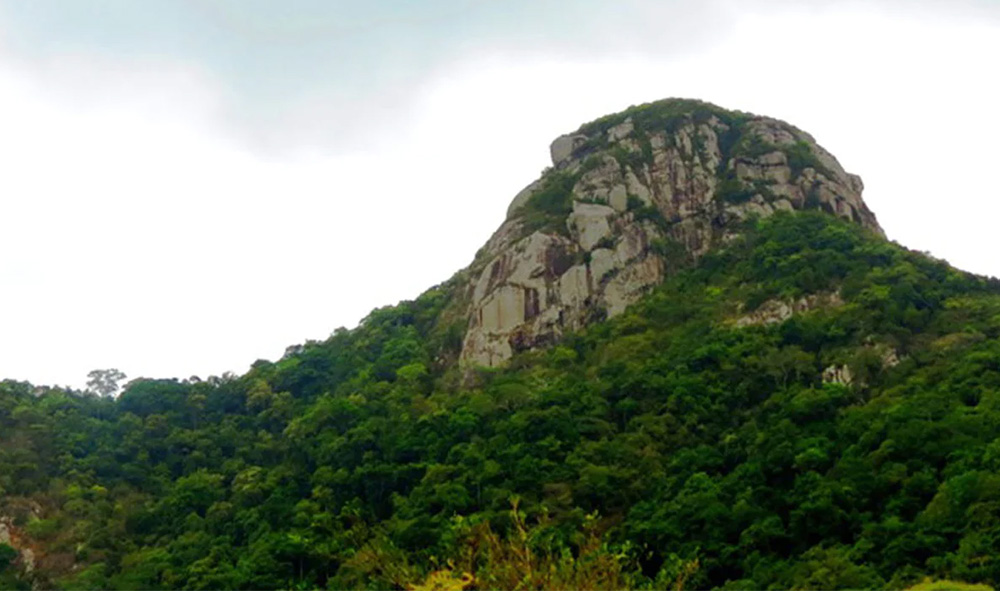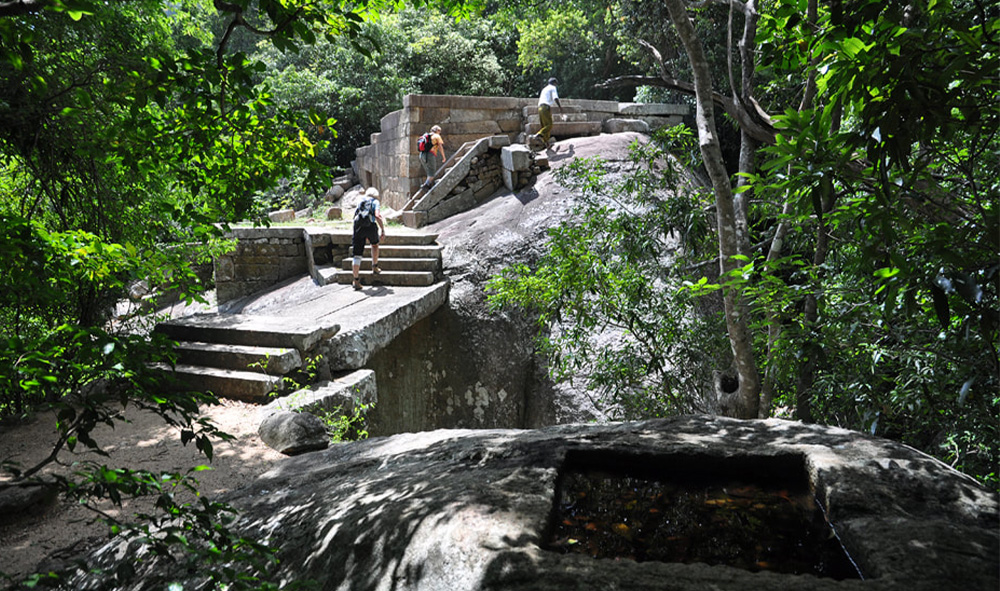Ritigala
Sum up
Ritigala is part abandoned monastic complex, part hillside nature reserve, so evocative that you suspect Indiana Jones might pop out of the undergrowth at any moment.
Duration: 2 hours
Best Time: Year-round
Additional Information
The Ritigala Buddhist Monastery is hidden deep inside the Ritigala Strict Nature Reserve and benefits from being one of the lesser-visited sites in Sri Lanka’s cultural triangle. The ruined monastery dates back to the time of the ancient Sinhalese Kingdom of Anuradhapura . It was once a sprawling monastic complex, abandoned in the 10th and 11th centuries following a series of invasions from India.
Today, some ruins of the monastery still stand – wander through the forest along old paths, painstakingly made using large stone slabs, and lose yourself in the tranquil atmosphere of this beautiful environment as you explore the various relics which remain. Nature enthusiasts will be seduced by the diverse range of flora and fauna in this high-altitude forest, some of which is unique to this area.
Ritigala, like so many Sri Lankan sites, was abandoned following the Chola invasions in the 10th and 11th centuries, after which it was largely forgotten until it was excavated by British surveyors in the late 19th century.
Whilst you can explore Ritigala on your own, we recommend going with a guide so that get the most out of this entrancing historical site. Our host is highly-knowledgeable about Buddhism and Sri Lanka’s ancient history, and will bring Ritigala to life with his stories, giving you a glimpse of the thriving monastery it once was – a place for teaching, meditation and a home for a large monastic community who chose to give up worldly pleasures and devote themselves to a simple way of life.
Found just off the Anuradhapura-Habarana road, Ritigala’s hills once provided a sanctuary for monks who wanted to escape the everyday world, a place for meditation and a simple way of life; more than 70 caves have been discovered. This is a natural spot, lacking the ancient Buddhist icons or temples that characterise Sri Lanka’s most celebrated sites.
This range of hills, surrounded by the central plains, was declared a Strict Natural Reserve in 1941, and you might be observed by a monkey or two as you climb the steps through the forest. The hills are home to more than 30 mammals, including sloth bear, jackal, deer and wild boar; more than 100 bird species including hawk eagles; and a range of reptiles and butterflies.
The Ritigala mountain itself also has mythological status as the spot from which Hanuman, the monkey god, leapt to India in one mighty spring to tell Rama that he had discovered where Sita was being held by the king of Lanka.
The area has its own micro-climate. Predictably, temperatures fall with a rise in altitude and it is much wetter than the plains that surround it, particularly during the north-east monsoon from December to February. The south-west monsoon, in May and June, may also leave the summit buried in cloud while the weather is favourable at ground level. June to September and March and April are best.
Popular Activities
Anuradhapura Sum up Anuradhapura was Sri Lanka’s first civilisation and the centre-point of the island’s greatest kingdoms, acting as the royal capital …
Dambulla Cave Temple Sum up Dambulla Cave Temple is one of the most popular religious cultural sites in Sri Lanka, attracting tourists …
Polonnaruwa Sum up The well-preserved ruins of Polonnaruwa, Sri Lanka’s medieval royal capital, are one of the country’s most prominent cultural sites. …
Sigiriya Rock Fortress Sum up Sigiriya is one of the most dramatic and inspiring historical locations in the world, a huge rock …
Traditional Sri Lankan Village Life Sum up Discover the authentic rural charm of Sri Lankan village life. Simple and peaceful, life in …
Pidurangala Rock Sum up Pidurangala is an enormous rock located a few kilometres north of Sigiriya. The two rocks have an interlinked …
Sri Lanka Hot Air Ballooning Sum up Red Dot now offers hot air ballooning in the Cultural Triangle, a dramatic and rewarding …
Minneriya National Park Sum up Minneriya National Park is a small but popular wildlife park home to a wide range of Sri …
The Monkey Kingdom of Polonnaruwa Sum up Quite apart from the incredible ruins of this medieval city, Polonnaruwa is home to a …
Wasgamuwa National Park Sum up Wasgamuwa is a remote national park which is home to a wide variety of Sri Lankan wildlife, …
Kaludiya Pokuna Sum up Kaludiya Pokuna Forest near Kandalama – not to be confused with the ‘Kaludiya Pokuna’ close to Mihintale – …
The Aukana Buddha Sum up The Aukana Buddha statue in Sri Lanka is not only the tallest ancient Buddha statue in Sri …
Aluvihara Cave Temple Sum up The ancient Aluvihara cave temple is on the outskirts of Matale, north of Kandy, and has great …























